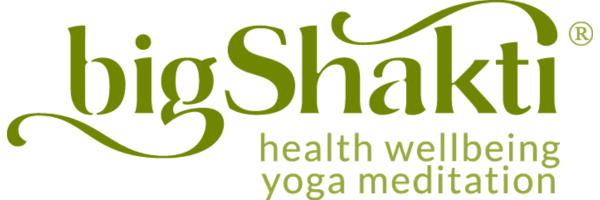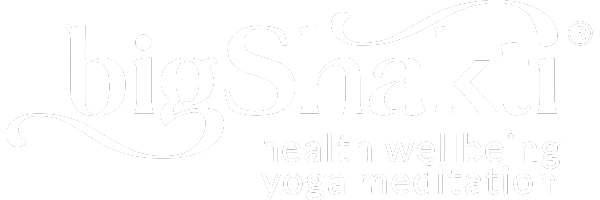Yoga of Mental Health Workshops → More Info
Podcast Ep. 16 ~ Prana and Spiritual Growth: Deepening Your Connection to Life Energy
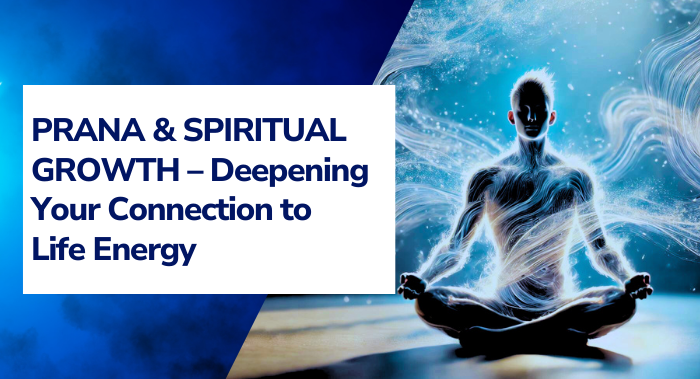
This episode is the talk from our Prana and Pranic Healing Guided Meditation Series, and our Life Force Meditation Series.
We believe this talk is important information to share. You need as much prana as you can get to live a healthy life and progress on the spiritual path.
This talk describes prana and:
- why it's crucial for our health and spiritual development;
- how we can become more aware of this subtle yet powerful force within us;
- the different types of prana in the body;
- how to cultivate and direct prana;
- the role of Prana in yoga and meditation practices, and
- how prana is used for healing.
Whether you're a seasoned yogi or new to the concept of subtle energy, this episode will provide valuable insights to help you tap into your inner vitality and enhance your overall well-being.
Big Shakti Podcast Links
📩 Subscribe to our Newsletter
🎙️ Big Shakti Podcast
🎧 Big Shakti Meditations
🌿️ Big Shakti’s Yoga and Meditation Courses
🧘🏻♀️️Jayne Stevenson’s intuitive healing and dream therapy practice
🧘 Dr. Swami Shankardev’s medical and psychotherapy practice
📹 Big Shakti’s YouTube Channel
Introduction to Prana
Prana is the energy that is the basis of all creation. Everything that exists, animate and inanimate, is a manifestation of prana in one form or another. However, the prana within living beings is a unique form of energy. It is the life force and is our most precious possession. It is our “vital energy”, our inner power and strength. At the subtlest and the most refined level, it is our spiritual essence.
The word prana can also be translated as breath, respiration, and spirit.
If our prana is low or imbalanced, we:
- feel weak,
- become prone to illness,
- are unable to use our mind and intellect fully.
When our prana is strong and balanced, we:
- are powerful, creative, capable beings,
- work in harmony with nature,
- are able to fuel and support our innate intelligence and intuition.
Each one of us has a prana bank account. We are given a certain amount of prana at birth. During our lives, we can squander our inheritance or build on it. If we squander it, we degenerate at an early age. If we build on it, we become more vital as we age and can better use the collective experience of our lives for a good purpose. From a higher perspective, prana is the force we use to dive into higher consciousness.
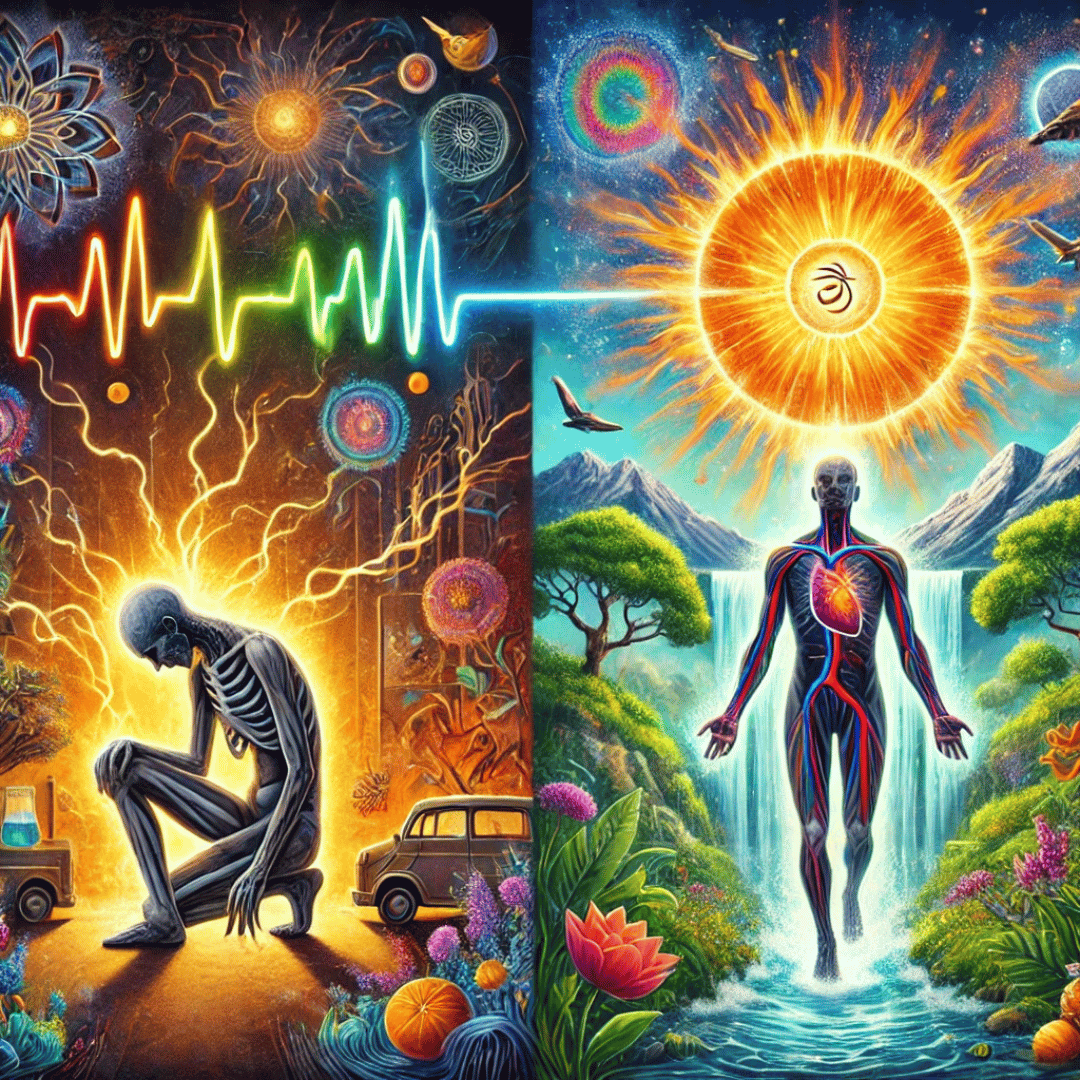
We need to learn about our prana, what it is, how to manage it, how to use it properly, and how to create more when we need it.
The human body-mind must be kept balanced and within a specific range of function for true health and strength. It is so easy for the body-mind to be disturbed and to lose prana if we are not careful, especially during stressful or difficult times.
Learning how to become more conscious of prana is important so that you can manipulate it for better health, strength, and higher awareness.
To learn more about engaging Prana, here is where we recommend to start:
How can we describe prana?
Prana is a very complex phenomenon, not just air, or the breath, or a simple energy. Its nature is highly changeable and is constantly moving.
In Indian traditional medicine, prana is also called vata, which means wind. Vata is described as cold, dry, subtle, rough, and erratic.
In Chinese medicine, prana is called qi and is described as being like a vapor that can suddenly appear and then disappear and undergo major alterations in the next moment.
Prana is the essence of the principle of movement and change in the body and has been compared to a current of electricity.
Certain meditation practices are designed to allow us to perceive prana as sparks of light.
When the body or a part of the body is full of healthy, balanced prana, it feels “good”. There is a sense of strength, and that part glows and tingles and feels warm and nourished. Prana is the basis of this warm, glowing feeling.
Life is pulsatory. Prana is constantly flowing and also pulsating. For example, the heart and lungs pulse in a steady rhythm.
Any contraction, whether muscular, mental, or emotional, can block the pulsation of prana, causing stagnation. Prana can also become imbalanced, overstimulated, or undercharged, or it can form toxins. When flow and pulsation are disturbed, prana cannot nourish and strengthen us. Instead, imbalance can create dysfunction and disease.
Learn how to work with areas of your body that may have become stuck, blocked, or toxic through prana meditation can re-establish balance, harmony, and better health and well-being.
The key to achieving this is to learn about the nature of prana, how to generate more of it, store it, and utilize it properly. Here is where we recommend to start:
Prana generation, storage, and utilization
In studying Prana, we need a systematic process to sense what prana feels like. As we develop this awareness, we can become more sensitive to the body’s needs. When we are tuned to our prana, we intuitively know what makes us feel strong and healthy and what makes us weak and sick.
Once we can feel our prana to some degree, we can learn how to consciously generate, store, and use prana wisely. Later, we can begin to access prana directly from our spiritual essence.
Prana is a life force, and life feeds on life.
The primary function of prana is to maintain itself. That means to keep us alive. It seeks to extract prana from the world around us and to generate more prana within us.
We take prana in from other life forms, such as food, liquids, and the air we breathe. The more alive and full of life-force a substance is, the more life-force we extract.
Also, the more prana there is in the air, the better we feel. For example, there is a lot of prana at higher altitudes in the mountains.
The generation of prana also occurs through stillness and deep rest.
Sleep is meant to do this, but it is not always efficient, especially if we go to bed exhausted or full of worries and tension.
Relaxation and meditation practices are the most efficient forms of rest. They allow us to calm our minds and emotions and replenish ourselves with energy.
The lying meditation called Yoga Nidra, or the pranic relaxation, are excellent ways to restore and nourish ourselves when we’re tired.
All activities use prana. This includes movement, speech, thought, and emotion. Certain activities use a lot of prana, such as worry or emotional distress. Poor diet and lifestyle can damage prana.
Therefore, we need to live a healthy lifestyle and engage in practices that maintain our prana in a healthy state.
Maintaining mental and emotional balance is also crucial to avoiding wasting prana.
Loving experiences create prana; negative emotions and depression deplete it.
Therefore, to reach our greater pranic potential, we need to fill ourselves with the best quality fuel at all levels of our being: physical, mental, emotional, and spiritual.

The pranic sheath – the pranamaya kosha
We will now describe the pranic sheath – the pranamaya kosha.
Prana means energy, maya means composed of, and kosha means sheath. The pranamaya kosha is the sheath, which is composed of the prana.
Yogic physiology divides the human being into five bodies or sheaths with increasing levels of subtlety:
- the physical sheath
- the pranic sheath
- the mental sheath
- the psychic sheath, which is also called the sheath of intelligence, and
- the most subtle is the causal, spiritual sheath.
The sheaths are not separate entities but are different levels of function and subtlety of the one organism. You cannot separate them just as you cannot separate heat and light from fire. In the same way, we cannot separate prana or the mind from living, intelligent, conscious tissue.
The pranic sheath is made up of energy.
It has the same relationship to the gross physical sheath as the air in a balloon. Air should keep the balloon's skin tensed to a level where it is not too tight or loose.
When the air pressure is correct, the balloon can float. If there is too much air in the balloon, it is over-tensed and eventually bursts. If the balloon is under-inflated, it is flaccid, floppy, and cannot stay up.
Prana has the same function in all the organs of the human body; it keeps us up and alive.
The sub-pranas (vayus)
The pranic sheath is composed of five sub-pranas, called vayus in Sanskrit. Four of these govern the four main areas of the body, while the fifth is the controller of all the elements. Each division of the body is ruled by one of the elements of nature: earth, water, fire, air, and space.
- the pelvis (apana vayu) - ruled by the earth element
- the belly (samana vayu) - ruled by the water element
- the chest (prana vayu) - ruled by the fire element
- the head (udana vayu) - ruled by the air element
- The fifth sub-prana controls the other four (vyana vayu) - ruled by the space element.
Connecting the sub-pranas to each other is a network of subtle channels or energy currents, called nadis.
When prana enters an area of the body, it takes on the characteristics of the element related to that part of the body. For example, prana in the pelvis becomes the sub-prana associated with the earth element. Its characteristic is heavy and descending.
Prana vayu
The sub-prana, prana vayu, is seated in the chest and is associated with the fire element. Fire transforms food into energy. Prana also powers the breath and the heart. At this level, prana is the power of combustion, the most fundamental and primary of the sub-pranas.
Apana vayu
Apana vayu is the sub-prana seated in the pelvis and is associated with the earth element. It governs rejection and elimination. Seated in the lower part of the body, it acts on the whole body like a magnetic force or like the force of gravity, which pulls things downward. It then expels solid, liquid, and gaseous wastes from the body.
Samana vayu
Samana vayu is the sub-prana seated in the upper belly and is associated with the water element. Samana both moves sideways and circulates around the navel. It digests and assimilates food and nutrients and then impartially distributes these substances and energy produced by food to all the organs via blood circulation.
Udana vayu
Udana vayu is the sub-prana seated in the head associated with air. Udana means “the breath which moves upwards.” It is the force that enables each organ to act by itself, to possess an independent activity.
Vyana vayu
Vyana vayu is the sub-prana associated with the element of space, and therefore, it is diffused through the body. Vyana is present everywhere and controls all the other divisions of prana. It causes the body to function as a complex organism whose different cells have different, distinct attributes yet can work together. It controls planning, specialization, and integration.
Learning to place your awareness into the four main divisions of the body, the pelvis, belly, chest, and head allows you to begin to feel the different sup-pranas acting in this division of the body.
Then you can learn to manipulate each part to create a more balanced and harmonious internal state.
The breath is one of the most important tools we have to manipulate and balance prana.
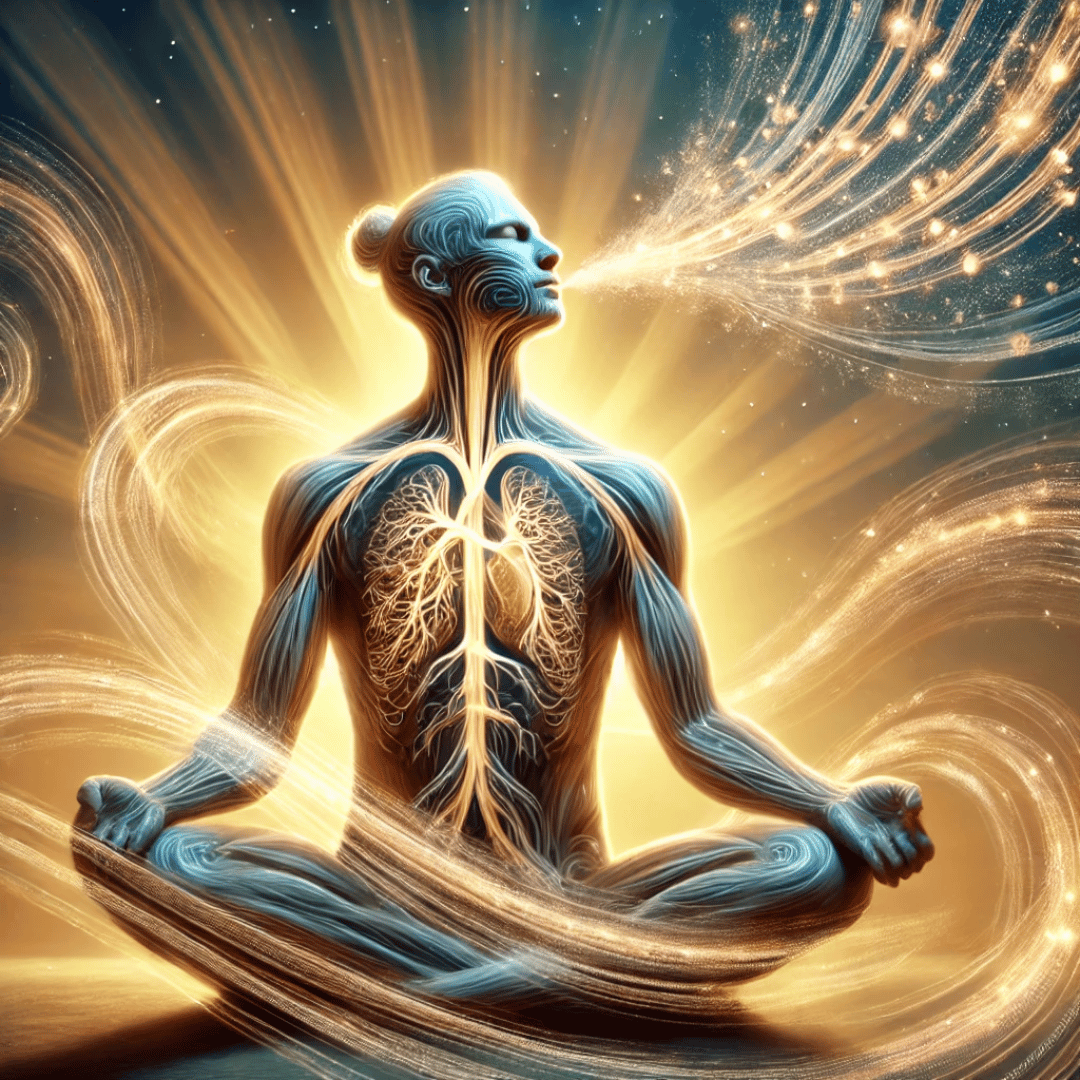
The breath and prana
Connecting to our own breath allows us to gain awareness of prana.
We can begin to control and direct our prana by observing, controlling, and directing the breath.
There are two levels of the breath:
- the gross breath
- the subtle breath.
The subtle breath is the prana itself.
The gross breath has three phases:
- inhalation
- exhalation, and
- the pause or space between the breaths.
Inhalation and exhalation have entirely different characteristics.
- Inhalation is an active process. Energy is required to contract the breathing muscles, diaphragm, and ribs to pull air into the lungs.
- Normal relaxed exhalation is passive; no muscular contraction is required. Exhalation can be made more forceful by muscular contraction, for example, coughing and sneezing.
Exhalation can also be slowed through muscular control.
The gross breath has two levels of control:
- The autonomic nervous system keeps the breath moving constantly, even when we’re asleep.
- The voluntary nervous system allows us to override autonomic control to speed up or slow down our breath whenever we want to.
We cannot do this with other internal organs. For example, we cannot directly control the heart or blood pressure. However, we can use breathing to affect the heart and blood pressure.
The gross breath is a mirror of what is going on inside us.
- When we are tense, it is automatically rapid and irregular.
- When we’re relaxed, it is automatically long, slow, and smooth.
If we are tense and consciously slow our breathing, we can feel more relaxed and also relax other internal organs, such as the heart and blood pressure.
The subtle breath is actually the prana itself and can only be understood by experience.
Prana propels the gross breath.
The gross breath and prana move in opposite directions.
- As we inhale, the gross breath takes air down into the lungs, and at the same time, prana moves upwards.
- When we exhale, air moves up inside the body before it’s expelled from the body, and at the same time, prana moves down.
Learn to observe this dual aspect of the breath and to use these two aspects of the breath to improve your health.
Exploring Prana Activation Breathing Techniques
The prana activation breathing techniques are designed to guide you through a step-by-step process to explore and balance your prana safely.
Learning how to maintain prana in a healthy, balanced state, ensuring you have the energy needed for all aspects of your life. Using the practices will also show you how to clear blockages that lead to fatigue and negativity, restoring the natural flow of energy throughout your body.
As you progress with your practice, you'll discover the different levels of prana and the deep connection between prana and the breath. Over time, these concepts won’t just be theoretical—they’ll become something you experience first-hand.
These techniques help you harness prana that’s often scattered in daily activities and refocus it to awaken consciousness. By doing so, you’ll begin to access the most subtle, powerful levels of prana, bringing about a profound connection to your inner self.
This is a transformative experience that leads to the gradual unveiling of the true Self and the boundless potential within.
Advanced prana practices can open the door to deep spiritual insights, as they allow you to connect with the very essence of your being.
Here is where we recommend to start to learn the basics and progress with Prana management:
Big Shakti Podcast Links
📩 Subscribe to our Newsletter
🎙️ Big Shakti Podcast
🎧 Big Shakti Meditations
🌿️ Big Shakti’s Yoga and Meditation Courses
🧘🏻♀️️Jayne Stevenson’s intuitive healing and dream therapy practice
🧘 Dr. Swami Shankardev’s medical and psychotherapy practice
📹 Big Shakti’s YouTube Channel
Categories
- Yoga Therapy (59)
- Meditation (33)
- Yoga Psychology (41)
- Consciousness (31)
- Everyday Wisdom (34)
- Yoga Nidra (14)
- Relaxation (26)
- Spirituality (26)
- Wisdom (6)
- Meditation Techniques (42)
- Prana - The subtle breath (16)
- Yoga Philosophy (27)
- Chakras (28)
- Yoga (15)
- Diseases (10)
- Yoga Meditation Research (5)
- Ayurveda (4)
- Third Eye - Ajna Chakra (7)
- Podcast (23)
- Articles by Jayne Stevenson (17)
- Articles by Swami Shankardev (25)
- Life Purpose (8)
- Yoga Tantra (20)
- Shadow Self (10)
- Symbols (3)
- Carl Jung (6)
- Mantras (19)
- e-mag (16)
- Mental Wellness (47)
- Stress Management (12)
- Emotion (3)
- Self-Awareness (1)
- Self-Regulation (2)
- Healing (3)
2025 Yoga of Mental Health Workshops
- Sāṁkhya Philosophy & Mental Health: A Yogic Path to Holistic Well-being
- Uncovering the Roots of Mental Illness: Insights from the Gita & Patanjali
- Restoring Self-Regulation: Yogic Techniques for Emotional Resilience & Inner Strength
- Mantra Therapy: Transforming Thought Patterns for Emotional Healing & Mental Wellbeing
